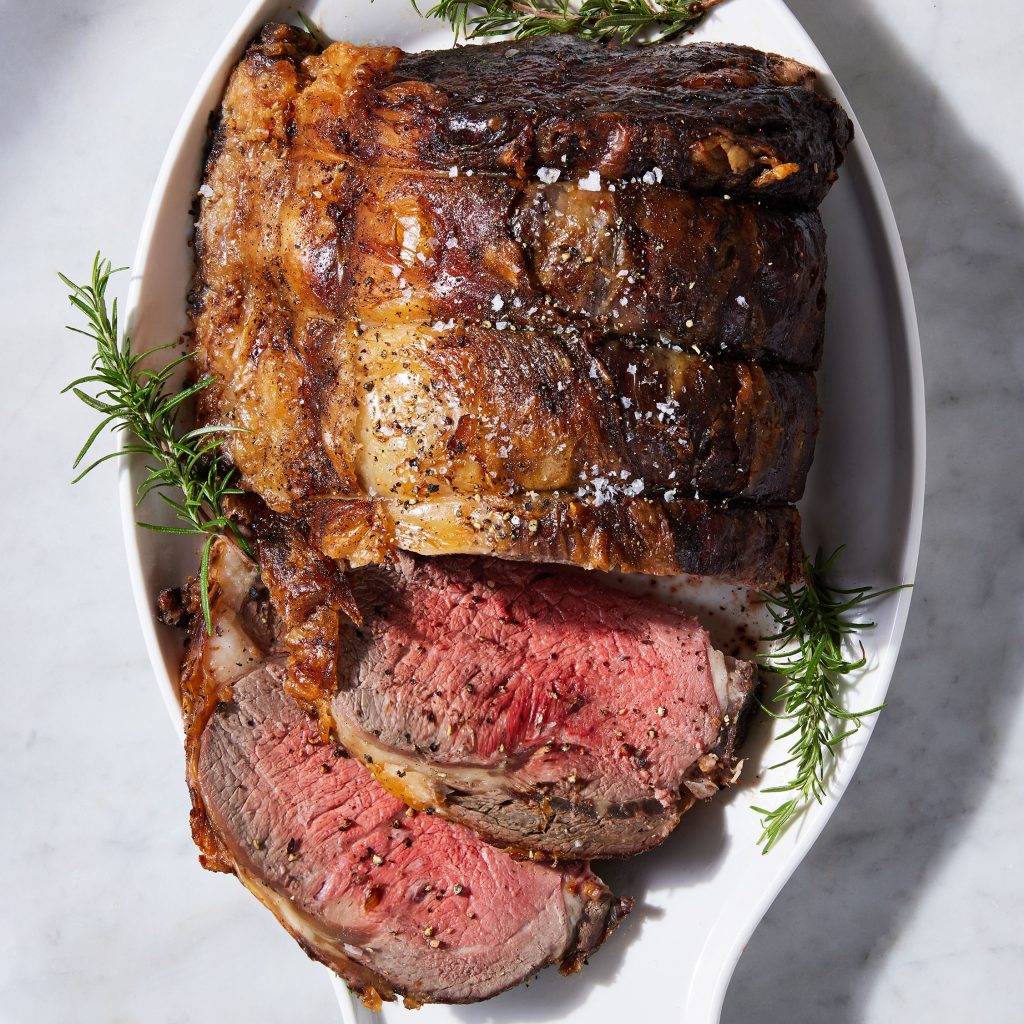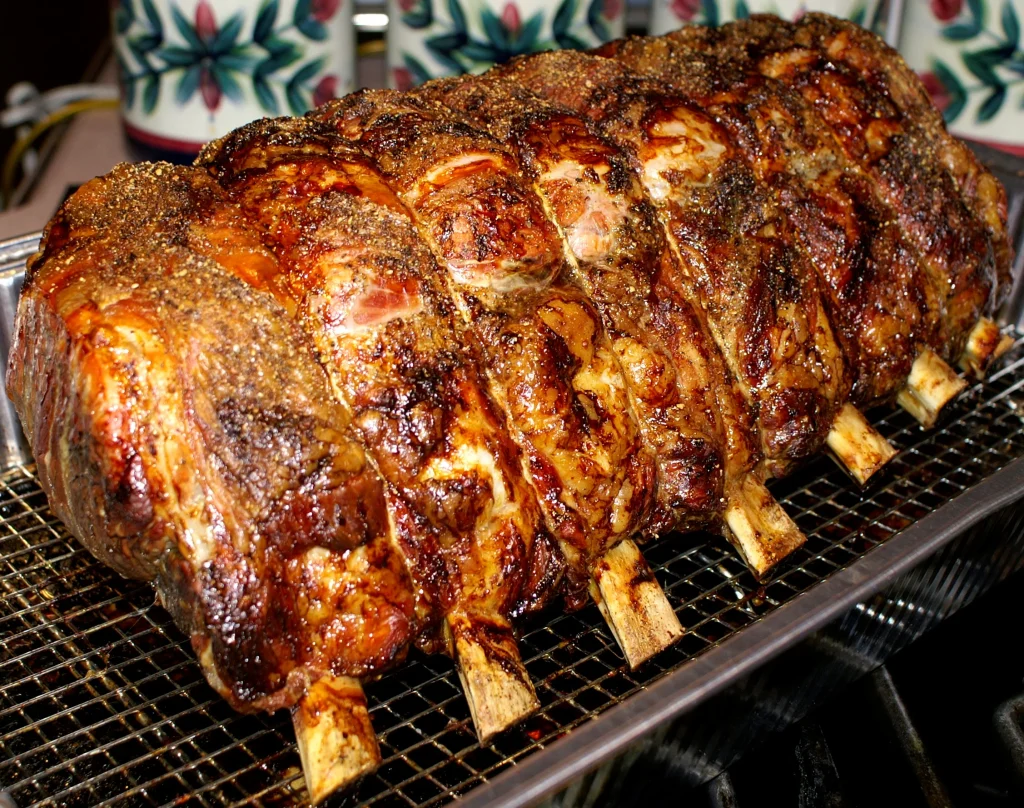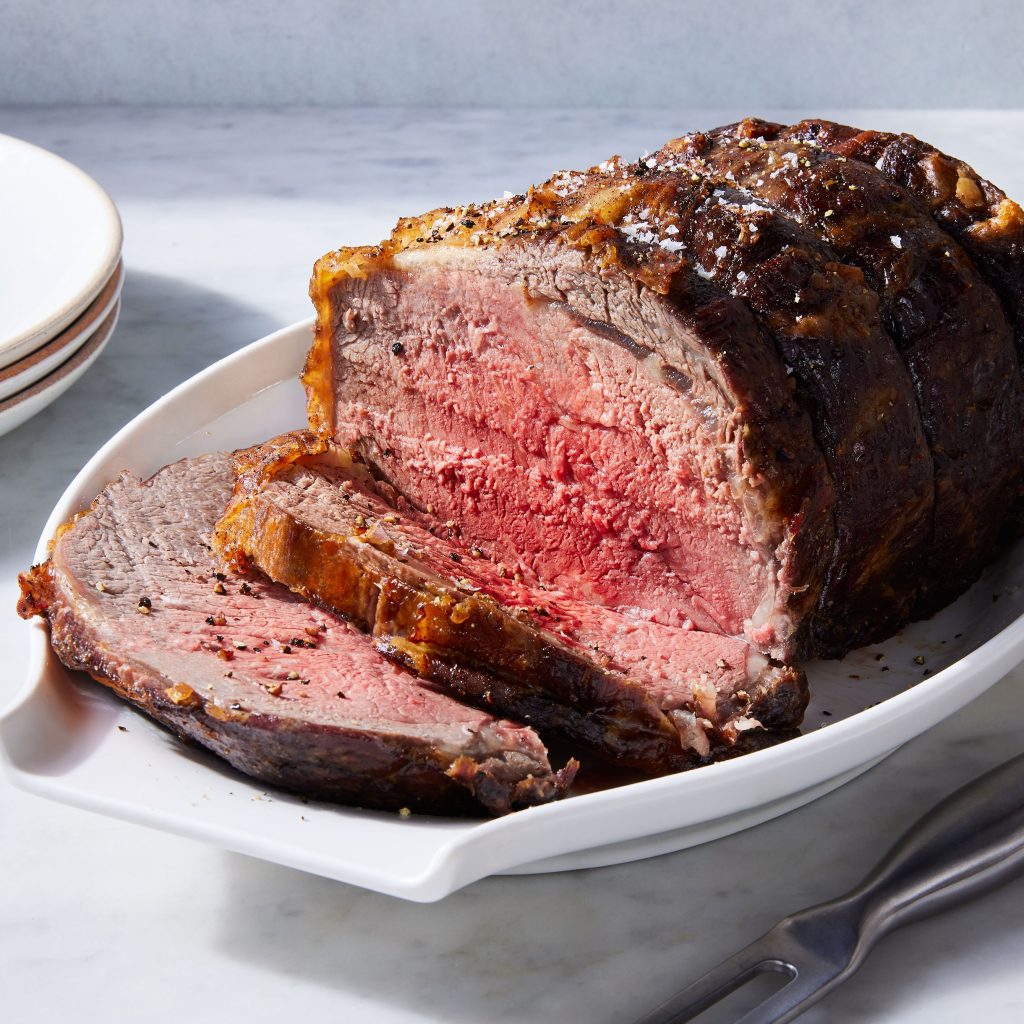The Basics of Prime Rib
Prime rib is a popular cut of beef known for its rich, juicy flavor and tender texture. It’s a cut that’s often reserved for special occasions or holiday meals because it can be pricey, but when cooked correctly, it’s a true culinary masterpiece. In this post, we’ll be sharing a step-by-step guide on how to cook a perfect 4-pound prime rib, so you can impress your friends and family with your culinary skills.
Prime rib is a classic dish that can seem intimidating to cook, but with the right technique, anyone can master it. A great prime rib starts with a quality cut of meat, proper seasoning, and careful cooking to achieve the desired level of doneness. The result is a flavorful and tender roast beef that is the perfect centerpiece for a special meal.
Before we dive into the details of the recipe, it’s important to understand the basics of prime rib. Prime rib is typically made with a bone-in rib roast, which is a large cut of beef that can weigh anywhere from 2 to 10 pounds. For this recipe, we’ll be focusing on a 4-pound roast, which can serve 6 to 8 people.

When it comes to cooking a perfect prime rib, there are a few things you need to keep in mind. First, you need to let the meat come to room temperature before cooking. This helps it cook evenly throughout. Second, you should season the meat generously with salt and pepper or your preferred seasonings. Third, you should use a meat thermometer to make sure the meat is cooked to your desired level of doneness. Keep these tips in mind as we move on to the next section on preparing the prime rib.
For preparing the prime rib, you’ll need to remove it from its packaging and pat it dry with paper towels. Then, tie the roast with kitchen twine to help it keep its shape. This will help the roast cook more evenly and maintain its shape. After tying up the roast, season it with salt, black pepper, and any other seasonings you prefer. Some people like to add garlic or herbs for additional flavor. Make sure to season the meat generously on all sides. Let’s move on to the next section on cooking this fabulous roast.
Preparing the Prime Rib
To tie the roast, start by cutting a piece of kitchen twine about twice as long as the roast. Place the roast on a cutting board with the bone side down, then slide the twine underneath the roast about 2 inches from one end.
Next, bring the twine up on both sides and cross it over the top of the roast. Tighten the string and bring the ends around the roast, tying it off on top. Repeat this process every 2 inches or so until you’ve tied the entire roast. This will help the meat cook more evenly and maintain its shape.

Once you have tied the roast, season it generously with kosher salt, freshly ground black pepper, and any other herbs or spices you like. Rub the seasoning mixture all over the surface of the meat, making sure to get it into all the nooks and crannies. If you like, you can also rub the meat with minced garlic, rosemary, thyme, or other aromatic herbs. This will add extra flavor to the meat as it cooks.
You want it to have a nice coating that will help to form a flavorful crust. Once you’ve seasoned the meat, let it sit at room temperature for at least an hour before cooking. This will allow the meat to absorb the flavors and come up to room temperature, which will help it cook more evenly. If you want, you can also let the meat sit in the refrigerator for up to 24 hours, which will help to deepen the flavors even more.
During the time that the meat is resting at room temperature or in the refrigerator, it’s important to also preheat your oven to 450°F. This high temperature will help to form a crust on the outside of the meat. Once the oven has preheated and the meat has rested, you can now cook the prime rib according to your desired level of doneness.
Cooking the 4 Pound Prime Rib
To cook the prime rib in the oven, place it on a wire rack in a roasting pan with the fat side facing up. Make sure that the pan is deep enough to catch any juices that may spill over during cooking. Insert a meat thermometer into the thickest part of the meat, making sure that it’s not touching the bone. This will help you monitor the temperature of the meat throughout the cooking process. Place the prime rib in the oven and cook for 15 minutes at 450°F to form a crust on the outside of the meat. Then, reduce the temperature to 325°F and continue cooking until the internal temperature reaches your desired level of doneness. Remember to remove the meat from the oven when the internal temperature is a few degrees lower than your desired level, as the meat will continue to cook as it rests.
Once the prime rib is done cooking, remove it from the oven and let it rest for at least 15 minutes. This will give the meat time to relax and the juices to settle back into the meat before it’s sliced. You can cover the meat loosely with aluminum foil to keep it warm while it rests. Don’t be tempted to slice the meat right away, as this will cause the juices to flow out and the meat to become dry. Instead, use the resting time to make the au jus or any other sides that you plan to serve with the meat.

Once the prime rib has rested, it’s time to slice it. Use a sharp carving knife to cut slices against the grain, starting from the bone end of the roast. Cut each slice about 1/2-inch to 3/4-inch thick. You can adjust the thickness of the slices to your liking, but keep in mind that thinner slices will cool more quickly and may become dry. Serve the sliced meat with the au jus and your favorite sides, such as mashed potatoes, roasted vegetables, or a salad. Enjoy your perfectly cooked 4 pound prime rib!
An important thing to keep in mind when carving the prime rib is to cut against the grain. This means cutting perpendicular to the lines of muscle fibers in the meat. This will make the meat more tender and easier to chew. You can also remove the bones and tie them back on to make a bone-in roast that makes it easier to cook. Remember to use a sharp knife and let the meat rest before slicing it, to ensure the perfect result.
Let’s talk about some common mistakes people make while cooking a prime rib. One common mistake is not bringing the meat to room temperature before cooking, which can cause the meat to cook unevenly. Another mistake is over-seasoning the meat, which can overpower the natural flavor of the meat. A third mistake is overcooking the meat, which can lead to a dry and tough result. Finally, not letting the meat rest before slicing it can cause the juices to flow out and make the meat dry. By avoiding these mistakes, you can ensure that your prime rib turns out perfect every time.
Making the Perfect Au Jus
To ensure that your prime rib cooks evenly and reaches the desired internal temperature, it’s important to use a meat thermometer. Insert the thermometer into the thickest part of the meat, being careful not to touch the bone. The thermometer should read 120°F for rare, 130°F for medium-rare, or 140°F for medium. Once the meat has reached the desired temperature, remove it from the oven and let it rest for at least 15 minutes before slicing. This allows the juices to redistribute, resulting in a juicier and more tender meat.
During the resting time, tent the prime rib with foil to keep it warm. This also allows the flavors to deepen and the juices to settle. While your prime rib is resting, you can make the au jus. Use a fat separator to remove the fat from the juices in the roasting pan. Then deglaze the pan on the stove over medium heat with some red wine and beef broth, scraping up any browned bits from the bottom of the pan. Add in some aromatics, like onions and garlic, and let the mixture simmer until it reduces and thickens to your desired consistency. Once the sauce is done, transfer it to a serving dish.
When slicing your prime rib, make sure to cut against the grain. This will ensure the meat is tender and easy to chew. If you’re not sure which way the grain runs, look for the lines in the meat and cut perpendicular to them. For a 4 pound prime rib, you can expect to get about 8-10 slices, depending on how thick you cut them. Serve the prime rib with the au jus and any sides you like. Mashed potatoes, roasted vegetables, and dinner rolls are all great options. And of course, don’t forget the horseradish sauce for some extra kick! Enjoy your delicious and perfectly cooked prime rib with your family and friends.

After removing the prime rib from the oven, it’s important to let it rest for at least 15 minutes before slicing. This allows the juices to redistribute and results in a juicier and more tender meat. While the prime rib is resting, you can make the au jus by deglazing the pan you cooked the prime rib in with beef broth and red wine. Add in some aromatics like onions and garlic, and let the mixture simmer until it reduces and thickens. Once the sauce is done, slice the prime rib against the grain and serve with the au jus and your favorite sides. Enjoy!
Serving and Enjoying Your Perfect Prime Rib
One thing to keep in mind when cooking a prime rib is that it’s a relatively expensive cut of meat, so you want to make sure you get it right. However, cooking a perfect prime rib doesn’t have to be intimidating! With a little bit of know-how and some attention to detail, you can easily cook up a delicious and impressive meal that your whole family will love. Just follow the steps outlined in this guide, and you’ll be well on your way to enjoying a perfect 4 pound prime rib in no time. Whether you’re cooking for a special occasion or just want to treat yourself and your loved ones to a gourmet meal, a perfectly cooked prime rib is sure to impress. So why not give it a try and see what all the fuss is about? Happy cooking!
Cooking a prime rib may seem daunting at first, but with a little bit of practice, you’ll soon become a pro. Don’t be afraid to experiment with different seasonings and cooking methods to find your perfect prime rib. You can even try smoking or grilling your prime rib for a unique twist on this classic dish. Just make sure to follow the basic principles of letting your meat come to room temperature, seasoning it generously, and using a meat thermometer to ensure it’s cooked to your desired level of doneness. And remember to let it rest after cooking to allow the meat to become even more succulent and delicious. With a little bit of patience and a lot of love, you can create a memorable meal that your family and friends won’t soon forget.
When it comes to seasoning your prime rib, don’t be afraid to get creative! While the classic combination of salt and pepper is always a safe bet, you can also try rubbing the meat with garlic, thyme, rosemary, or other herbs and spices. If you like a little heat, you can add in some cayenne pepper or chili flakes. Experiment with different flavor combinations to find your perfect prime rib seasoning! And remember, always let your meat come to room temperature before cooking, tie it with twine to help it keep its shape, and use a meat thermometer to ensure it’s cooked to perfection.
After removing the prime rib from the oven, it’s important to let it rest for at least 15 minutes before slicing. This allows the juices to redistribute and results in a juicier and more tender meat. While the prime rib is resting, you can make the au jus by deglazing the pan you cooked the prime rib in with beef broth and red wine. Add in some aromatics like onions and garlic, and let the mixture simmer until it reduces and thickens. Once the sauce is done, slice the prime rib against the grain and serve with the au jus and your favorite sides. Enjoy!

Hello there! My name is Tristram Ortega and I am a professional chef with a passion for cooking. I work at a top-rated restaurant where I create delicious dishes every day, and I’m excited to share my tips and techniques with you. Through this blog, I share my favorite recipes, cooking hacks, and insights into the world of professional cooking. So let’s get cooking together!